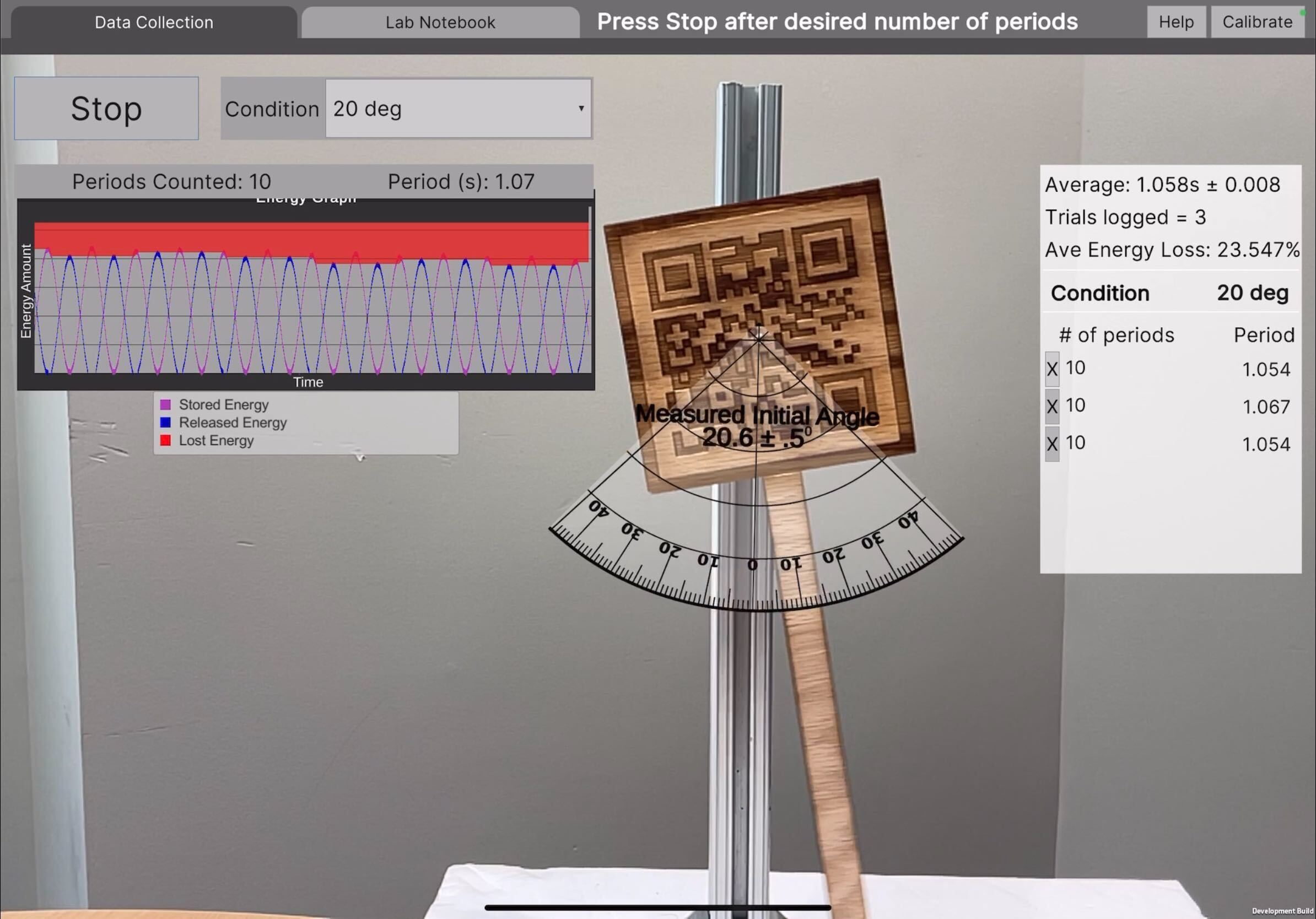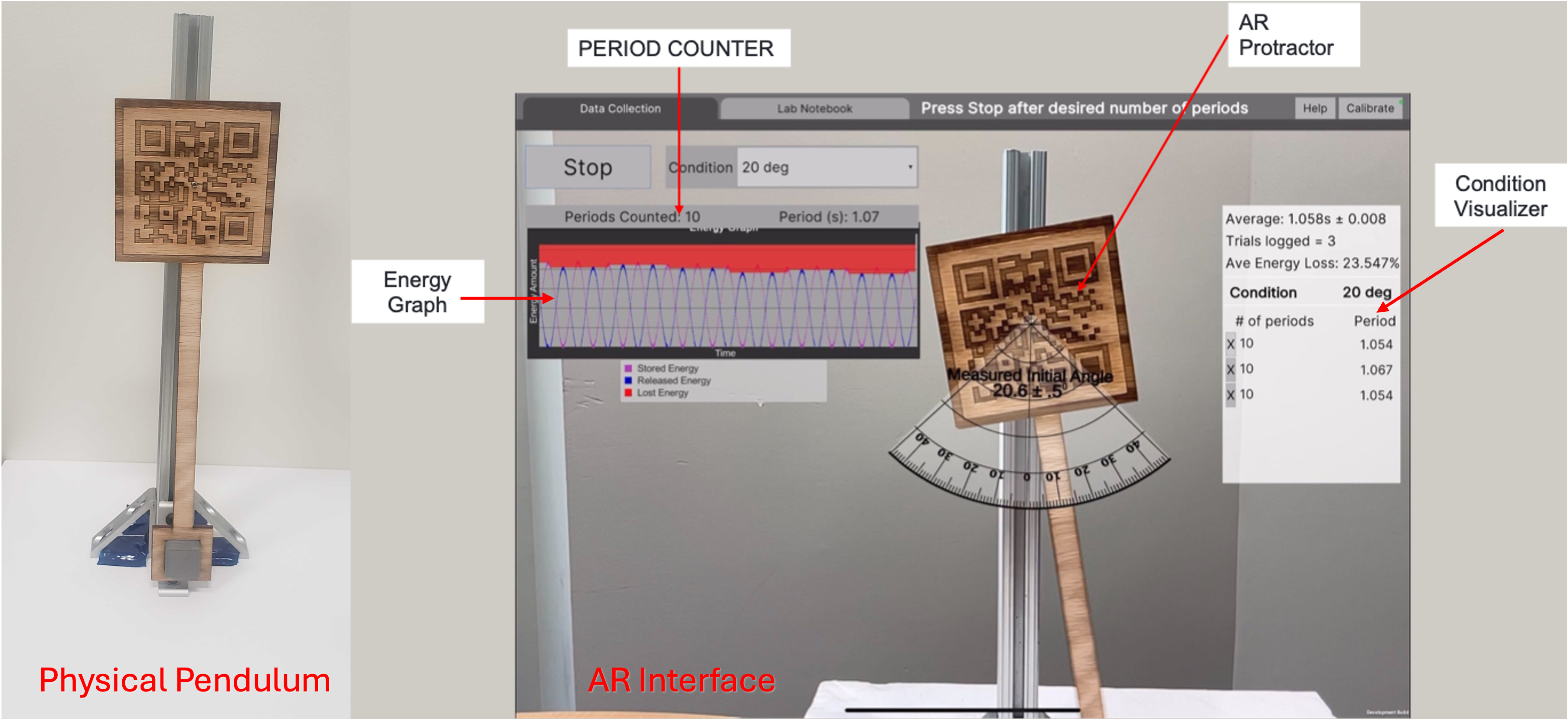
Effects of Augmented Reality Enhancements on Students’ Scientific Reasoning in an Introductory Physics Laboratory
Elizabeth Childs, Kongmeng Her, Kristen Pilner Blair, Allison M. Okamura, James A Landay
Advances in augmented reality (AR) have been studied to supplement hands-on, physical labs. While prior research has focused on advancing content mastery and science interest, little work has investigated using AR to enhance scientific reasoning in laboratory classrooms. This study introduces an AR-enhanced physics lab to teach scientific reasoning and the understanding of measurement uncertainty. AR overlays of protractors, real-time energy flow graphs, and an automated period counter were created to reduce extraneous cognitive load and illuminate scientific insights throughout a pendulum experiment. Compared to the traditional lab, participants in the AR group demonstrated greater insights into data differences, increased trust in their findings based on uncertainty analysis, and a deeper understanding of energy concepts. Results from the between-participant study (n=52) suggest the AR-enhanced lab enhances participants’ scientific reasoning skills (Bayes factor of 17.44) and demonstrates AR’s potential to improve scientific reasoning while maintaining interest and content mastery.
Concept and Design

The AR system was developed as a mobile application layered over a real physical pendulum. It was designed to act as a cognitive aid by embedding measurement tools and visualizations directly in the experimental space:
- AR Protractor – Anchored at the pivot point, a semi-transparent digital protractor displayed the pendulum’s angle in real time, along with the instrument’s uncertainty.
- Energy Graph – A dynamic visualization showing the flow of potential, kinetic, and dissipated energy during motion, making normally abstract energy concepts visible.
- Period Counter – Automated timing of oscillations, with both total counts and average periods, relieving participants from hand-counting and reducing measurement error.
- Lab Notebook Interface – A paired digital notebook that stored results, computed statistics (including t-tests), and displayed uncertainty values alongside measured data.
By combining real instruments with AR overlays, the system was designed to reduce extraneous cognitive load, support distributed cognition across digital and physical artifacts, and provide meta-representations that connected abstract physics concepts with real-time measurements.
Results

The results showed that AR-enhanced labs led to significantly greater improvements in scientific reasoning than traditional lab setups. Bayesian analysis produced a Bayes Factor of 18.11 favoring the AR condition, with a medium-to-large effect size (Cohen’s d = 0.63), indicating that participants using AR gained more from the experience. Students in the AR group engaged more deeply with their data: they were more likely to notice differences in energy dissipation, to reference uncertainty in their reasoning, and to trust their results. Energy transfer emerged as a particularly salient concept, with AR participants twice as likely to mention it as an insight compared to the control group. While both groups grasped the main physics concept—that larger angles affect pendulum period—the AR group showed stronger reasoning about why this was the case.
The findings suggest AR can act as a cognitive partner in laboratory learning, shifting student attention from procedural demands to critical evaluation of evidence.